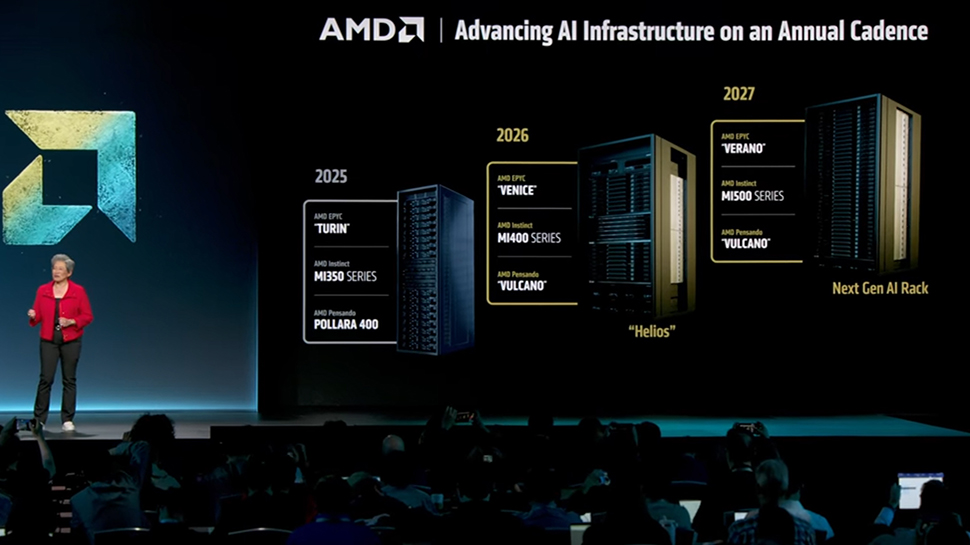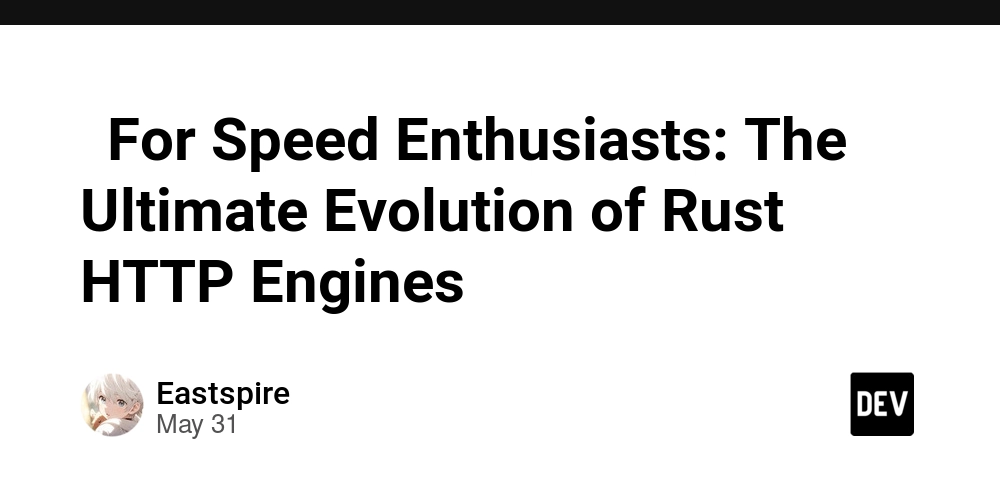VMware Fundamentals: Nsx Powerops
VMware NSX PowerOps: Streamlining Network and Security Operations in the Hybrid Cloud Era The relentless march towards hybrid and multi-cloud adoption, coupled with the increasing sophistication of cyber threats, has created a significant operational burden for enterprise IT teams. Traditional network and security management approaches, often reliant on manual processes and disparate tools, struggle to keep pace. Organizations are demanding automation, visibility, and consistent policy enforcement across their increasingly complex environments. VMware NSX PowerOps addresses this challenge directly, providing a centralized platform for automating network and security operations, reducing risk, and accelerating application delivery. VMware’s strategic focus on delivering a consistent infrastructure and security fabric, regardless of where applications reside, makes NSX PowerOps a critical component of the modern enterprise IT landscape. We’re seeing strong adoption in highly regulated industries like financial services and healthcare, as well as by SaaS providers needing to rapidly scale and secure their infrastructure. What is NSX PowerOps? NSX PowerOps isn’t a single product, but rather a suite of services built on top of the NSX platform designed to dramatically simplify and automate network and security operations. Historically, managing NSX, even with its inherent automation capabilities, required specialized networking expertise and often involved complex scripting. PowerOps aims to abstract away much of that complexity, providing a more intuitive and programmatic interface. At its core, PowerOps leverages a combination of: Declarative Configuration: Instead of issuing imperative commands, you define the desired state of your network and security infrastructure. PowerOps handles the translation and execution. GitOps Principles: Infrastructure as Code (IaC) is central. Configurations are stored in Git repositories, enabling version control, collaboration, and automated deployments. Automation Engine: A robust engine continuously monitors the environment, detects drift from the desired state, and automatically remediates it. Centralized Visibility & Analytics: Provides a single pane of glass for monitoring network performance, security posture, and troubleshooting issues. Typical use cases include automating firewall rule changes, deploying micro-segmentation policies, managing load balancing configurations, and responding to security incidents. Industries adopting PowerOps include financial services (for compliance and security), healthcare (for patient data protection), and large enterprises undergoing digital transformation. Why Use NSX PowerOps? The problems PowerOps solves are deeply rooted in the realities of modern IT operations. Infrastructure teams are overwhelmed by manual tasks, leading to errors and delays. SREs struggle to maintain consistent security policies across dynamic environments. DevOps teams are hampered by slow network provisioning, hindering application velocity. CISOs are concerned about the risk of misconfigurations and the lack of visibility into their security posture. Consider a large financial institution deploying a new application. Without PowerOps, this process might involve: Manually configuring firewall rules across multiple NSX environments. Coordinating changes with multiple teams (network, security, application). Testing the changes in a pre-production environment. Deploying the changes to production during a maintenance window. This process can take weeks, even months, and is prone to errors. With PowerOps, the same process can be automated using a declarative configuration stored in Git. Changes can be reviewed and approved through a pull request workflow, and deployed automatically with minimal downtime. This accelerates application delivery, reduces risk, and frees up valuable IT resources. Key Features and Capabilities Declarative Configuration Management: Define network and security policies as code (YAML) and store them in Git. PowerOps ensures the environment matches the defined state. Use Case: Automate the creation of firewall rules based on application tags. GitOps Workflow: Leverage Git for version control, collaboration, and auditability. Changes are deployed through pull requests and automated pipelines. Use Case: Implement a change approval process for all network and security modifications. Automated Drift Detection & Remediation: Continuously monitor the environment for deviations from the desired state and automatically correct them. Use Case: Ensure that firewall rules remain consistent even if manually modified. Policy-as-Code: Translate security and compliance requirements into automated policies. Use Case: Enforce PCI DSS compliance by automatically configuring firewall rules to protect cardholder data. Centralized Visibility & Monitoring: Gain a single p

VMware NSX PowerOps: Streamlining Network and Security Operations in the Hybrid Cloud Era
The relentless march towards hybrid and multi-cloud adoption, coupled with the increasing sophistication of cyber threats, has created a significant operational burden for enterprise IT teams. Traditional network and security management approaches, often reliant on manual processes and disparate tools, struggle to keep pace. Organizations are demanding automation, visibility, and consistent policy enforcement across their increasingly complex environments. VMware NSX PowerOps addresses this challenge directly, providing a centralized platform for automating network and security operations, reducing risk, and accelerating application delivery. VMware’s strategic focus on delivering a consistent infrastructure and security fabric, regardless of where applications reside, makes NSX PowerOps a critical component of the modern enterprise IT landscape. We’re seeing strong adoption in highly regulated industries like financial services and healthcare, as well as by SaaS providers needing to rapidly scale and secure their infrastructure.
What is NSX PowerOps?
NSX PowerOps isn’t a single product, but rather a suite of services built on top of the NSX platform designed to dramatically simplify and automate network and security operations. Historically, managing NSX, even with its inherent automation capabilities, required specialized networking expertise and often involved complex scripting. PowerOps aims to abstract away much of that complexity, providing a more intuitive and programmatic interface.
At its core, PowerOps leverages a combination of:
- Declarative Configuration: Instead of issuing imperative commands, you define the desired state of your network and security infrastructure. PowerOps handles the translation and execution.
- GitOps Principles: Infrastructure as Code (IaC) is central. Configurations are stored in Git repositories, enabling version control, collaboration, and automated deployments.
- Automation Engine: A robust engine continuously monitors the environment, detects drift from the desired state, and automatically remediates it.
- Centralized Visibility & Analytics: Provides a single pane of glass for monitoring network performance, security posture, and troubleshooting issues.
Typical use cases include automating firewall rule changes, deploying micro-segmentation policies, managing load balancing configurations, and responding to security incidents. Industries adopting PowerOps include financial services (for compliance and security), healthcare (for patient data protection), and large enterprises undergoing digital transformation.
Why Use NSX PowerOps?
The problems PowerOps solves are deeply rooted in the realities of modern IT operations. Infrastructure teams are overwhelmed by manual tasks, leading to errors and delays. SREs struggle to maintain consistent security policies across dynamic environments. DevOps teams are hampered by slow network provisioning, hindering application velocity. CISOs are concerned about the risk of misconfigurations and the lack of visibility into their security posture.
Consider a large financial institution deploying a new application. Without PowerOps, this process might involve:
- Manually configuring firewall rules across multiple NSX environments.
- Coordinating changes with multiple teams (network, security, application).
- Testing the changes in a pre-production environment.
- Deploying the changes to production during a maintenance window.
This process can take weeks, even months, and is prone to errors. With PowerOps, the same process can be automated using a declarative configuration stored in Git. Changes can be reviewed and approved through a pull request workflow, and deployed automatically with minimal downtime. This accelerates application delivery, reduces risk, and frees up valuable IT resources.
Key Features and Capabilities
- Declarative Configuration Management: Define network and security policies as code (YAML) and store them in Git. PowerOps ensures the environment matches the defined state. Use Case: Automate the creation of firewall rules based on application tags.
- GitOps Workflow: Leverage Git for version control, collaboration, and auditability. Changes are deployed through pull requests and automated pipelines. Use Case: Implement a change approval process for all network and security modifications.
- Automated Drift Detection & Remediation: Continuously monitor the environment for deviations from the desired state and automatically correct them. Use Case: Ensure that firewall rules remain consistent even if manually modified.
- Policy-as-Code: Translate security and compliance requirements into automated policies. Use Case: Enforce PCI DSS compliance by automatically configuring firewall rules to protect cardholder data.
- Centralized Visibility & Monitoring: Gain a single pane of glass view of network performance, security events, and policy compliance. Use Case: Identify and troubleshoot network bottlenecks in real-time.
- Role-Based Access Control (RBAC): Control access to PowerOps features and resources based on user roles. Use Case: Grant developers self-service access to deploy load balancers without compromising security.
- Automated Load Balancing Management: Programmatically manage NSX Advanced Load Balancer configurations. Use Case: Automatically scale load balancer capacity based on application demand.
- Micro-segmentation Automation: Simplify the deployment and management of micro-segmentation policies. Use Case: Isolate critical applications and data from unauthorized access.
- Network Intent: Define high-level network requirements (e.g., "application X needs access to database Y") and let PowerOps handle the underlying configuration. Use Case: Simplify network provisioning for new applications.
- Event-Driven Automation: Trigger automated actions based on specific events, such as security alerts or changes in application state. Use Case: Automatically block traffic from a compromised IP address.
Enterprise Use Cases
Financial Services – Regulatory Compliance: A global bank uses PowerOps to automate the enforcement of PCI DSS and other regulatory requirements. They define security policies as code and store them in Git, ensuring that all changes are auditable and compliant. Automated drift detection prevents misconfigurations that could lead to data breaches. Setup: Define PCI DSS policies in YAML, integrate with Git repository, configure automated drift detection. Outcome: Continuous compliance with regulatory requirements, reduced risk of data breaches. Benefits: Lower audit costs, improved security posture.
Healthcare – Patient Data Protection: A hospital network leverages PowerOps to micro-segment its network, isolating patient data from unauthorized access. They use policy-as-code to enforce strict access controls and monitor network traffic for suspicious activity. Setup: Implement micro-segmentation policies based on application and user roles, integrate with security information and event management (SIEM) system. Outcome: Enhanced protection of patient data, reduced risk of HIPAA violations. Benefits: Improved patient trust, reduced legal liability.
Manufacturing – Operational Technology (OT) Security: A manufacturing company uses PowerOps to secure its OT network, protecting critical infrastructure from cyberattacks. They implement strict access controls and monitor network traffic for anomalies. Setup: Segment OT network from IT network, implement firewall rules to restrict access to critical systems, configure intrusion detection system. Outcome: Reduced risk of production downtime, improved operational security. Benefits: Increased efficiency, reduced costs.
SaaS Provider – Rapid Scaling & Security: A rapidly growing SaaS provider uses PowerOps to automate the provisioning and management of its network infrastructure. They leverage GitOps to deploy changes quickly and reliably, and automated drift detection to ensure consistency. Setup: Integrate PowerOps with CI/CD pipeline, define network configurations as code, configure automated scaling. Outcome: Accelerated application delivery, improved scalability, reduced operational costs. Benefits: Faster time to market, increased customer satisfaction.
Government – Zero Trust Architecture: A government agency uses PowerOps to implement a zero-trust architecture, verifying every user and device before granting access to resources. They leverage micro-segmentation and policy-as-code to enforce strict access controls. Setup: Implement micro-segmentation policies based on user identity and device posture, integrate with identity and access management (IAM) system. Outcome: Enhanced security, reduced risk of data breaches. Benefits: Improved national security, increased public trust.
Retail – PCI Compliance and Fraud Prevention: A large retailer utilizes PowerOps to automate PCI DSS compliance across hundreds of stores and their data centers. They also leverage the platform to detect and respond to fraudulent activity by analyzing network traffic patterns. Setup: Define PCI DSS policies in YAML, integrate with threat intelligence feeds, configure automated alerts for suspicious activity. Outcome: Continuous PCI DSS compliance, reduced fraud losses. Benefits: Lower compliance costs, improved customer trust.
Architecture and System Integration
graph LR
A[vSphere/vCenter] --> B(NSX Manager);
B --> C{NSX PowerOps};
C --> D[Git Repository];
C --> E[NSX Advanced Load Balancer];
C --> F[SIEM (e.g., Splunk)];
C --> G[IAM (e.g., Okta)];
C --> H[VMware Aria Operations];
subgraph Network & Security Infrastructure
B
E
end
subgraph Management & Automation
C
D
G
H
end
style C fill:#f9f,stroke:#333,stroke-width:2px
NSX PowerOps integrates seamlessly with other VMware components, including vSphere, vCenter, NSX Manager, NSX Advanced Load Balancer, and VMware Aria Operations. It also integrates with third-party systems such as SIEM solutions (e.g., Splunk), IAM providers (e.g., Okta), and CI/CD pipelines. IAM integration allows for granular control over access to PowerOps features. Logging and monitoring data is sent to VMware Aria Operations for analysis and reporting. Network flow is managed by NSX, with PowerOps providing the automation and policy enforcement layer.
Hands-On Tutorial
This example demonstrates how to deploy a simple firewall rule using PowerOps and the VMware CLI (vCLI).
Prerequisites:
- NSX PowerOps environment configured.
- vCLI installed and configured.
- Git repository initialized.
Steps:
- Define the Firewall Rule (YAML):
apiVersion: nsx.vmware.com/v1
kind: FirewallRule
metadata:
name: allow-web-traffic
spec:
description: Allow inbound HTTP/HTTPS traffic
direction: IN
enabled: true
match:
protocol: tcp
ports:
- 80
- 443
actions:
- allow
Commit the YAML to your Git Repository.
Deploy the Rule using vCLI:
nsxop commit -f firewall_rule.yaml
- Verify the Rule:
nsxop get firewallrule allow-web-traffic -o yaml
This will output the deployed firewall rule in YAML format.
- Tear Down (Remove the Rule):
nsxop delete firewallrule allow-web-traffic
Pricing and Licensing
NSX PowerOps is typically licensed based on CPU count or instance count. VMware offers various editions with different feature sets. As of late 2023, a typical enterprise license might cost around $2,000 - $5,000 per CPU core per year, depending on the edition and contract terms. For a small environment with 10 servers (each with 2 CPU cores), the annual cost could range from $40,000 to $100,000. Cost-saving tips include optimizing CPU utilization and leveraging VMware’s flexible licensing options.
Security and Compliance
Securing NSX PowerOps involves several key steps:
- RBAC: Implement granular RBAC policies to restrict access to sensitive features.
- Multi-Factor Authentication (MFA): Enable MFA for all user accounts.
- Audit Logging: Enable comprehensive audit logging and integrate with a SIEM system.
- Network Segmentation: Segment the PowerOps environment from other networks.
- Regular Security Assessments: Conduct regular vulnerability scans and penetration tests.
NSX PowerOps can help organizations achieve compliance with various standards, including ISO 27001, SOC 2, PCI DSS, and HIPAA. Example policies include enforcing strong password policies, restricting access to sensitive data, and monitoring network traffic for suspicious activity.
Integrations
- NSX: Core integration for network and security policy enforcement. Flow: PowerOps defines policies, NSX enforces them.
- Tanzu: Automate network and security policies for Kubernetes clusters managed by Tanzu. Use Case: Secure microservices deployed in Tanzu.
- Aria Suite (formerly vRealize): Integrate with Aria Operations for monitoring and analytics. Flow: PowerOps sends telemetry data to Aria Operations.
- vSAN: Automate network configuration for vSAN clusters. Use Case: Simplify network setup for hyperconverged infrastructure.
- vCenter: Integrate with vCenter for virtual machine discovery and policy assignment. Flow: PowerOps retrieves VM information from vCenter.
Alternatives and Comparisons
| Feature | NSX PowerOps | AWS Security Hub | Azure Security Center |
|---|---|---|---|
| Focus | Network & Security Automation | Security Posture Management | Unified Security Management |
| Automation | High (GitOps, Declarative) | Limited | Moderate |
| Integration with Existing Infrastructure | Strong (VMware Ecosystem) | Limited (AWS Only) | Moderate (Azure Focused) |
| Complexity | Moderate | Low | Moderate |
| Cost | Moderate to High | Pay-as-you-go | Pay-as-you-go |
When to Choose:
- NSX PowerOps: Ideal for organizations heavily invested in the VMware ecosystem and seeking comprehensive network and security automation.
- AWS Security Hub/Azure Security Center: Suitable for organizations primarily using AWS or Azure, respectively, and needing a centralized security management platform.
Common Pitfalls
- Ignoring Version Control: Treating PowerOps configurations like disposable scripts. Fix: Always store configurations in Git.
- Insufficient RBAC: Granting excessive permissions to users. Fix: Implement the principle of least privilege.
- Lack of Testing: Deploying changes to production without thorough testing. Fix: Use a CI/CD pipeline with automated testing.
- Ignoring Drift Detection: Failing to monitor for and remediate configuration drift. Fix: Configure automated drift detection and remediation.
- Overly Complex Policies: Creating policies that are difficult to understand and maintain. Fix: Keep policies simple and modular.
Pros and Cons
Pros:
- Automates complex network and security tasks.
- Improves security posture and compliance.
- Accelerates application delivery.
- Reduces operational costs.
- Provides centralized visibility and control.
Cons:
- Requires specialized expertise.
- Can be complex to set up and configure.
- Cost can be significant for large environments.
- Strongly tied to the VMware ecosystem.
Best Practices
- Security: Implement RBAC, MFA, and audit logging.
- Backup: Regularly back up PowerOps configurations.
- DR: Develop a disaster recovery plan for PowerOps.
- Automation: Automate all aspects of PowerOps management.
- Logging: Centralize logging and integrate with a SIEM system.
- Monitoring: Use VMware Aria Operations or Prometheus to monitor PowerOps performance and health.
Conclusion
VMware NSX PowerOps is a powerful platform for streamlining network and security operations in the hybrid cloud era. For infrastructure leads, it offers a path to automation and reduced operational overhead. For architects, it provides a foundation for building secure and scalable infrastructure. And for DevOps teams, it accelerates application delivery and improves agility. The next step is to conduct a Proof of Concept (PoC) in a lab environment, explore the detailed documentation, and connect with the VMware team to discuss your specific requirements.













































































































































































![[The AI Show Episode 154]: AI Answers: The Future of AI Agents at Work, Building an AI Roadmap, Choosing the Right Tools, & Responsible AI Use](https://www.marketingaiinstitute.com/hubfs/ep%20154%20cover.png)
![[The AI Show Episode 153]: OpenAI Releases o3-Pro, Disney Sues Midjourney, Altman: “Gentle Singularity” Is Here, AI and Jobs & News Sites Getting Crushed by AI Search](https://www.marketingaiinstitute.com/hubfs/ep%20153%20cover.png)
























































































































![[FREE EBOOKS] The Chief AI Officer’s Handbook, Natural Language Processing with Python & Four More Best Selling Titles](https://www.javacodegeeks.com/wp-content/uploads/2012/12/jcg-logo.jpg)









































































![GrandChase tier list of the best characters available [June 2025]](https://media.pocketgamer.com/artwork/na-33057-1637756796/grandchase-ios-android-3rd-anniversary.jpg?#)




































































_Frank_Peters_Alamy.jpg?width=1280&auto=webp&quality=80&disable=upscale#)












































































































![Apple Weighs Acquisition of AI Startup Perplexity in Internal Talks [Report]](https://www.iclarified.com/images/news/97674/97674/97674-640.jpg)
![Oakley and Meta Launch Smart Glasses for Athletes With AI, 3K Camera, More [Video]](https://www.iclarified.com/images/news/97665/97665/97665-640.jpg)

![How to Get Your Parents to Buy You a Mac, According to Apple [Video]](https://www.iclarified.com/images/news/97671/97671/97671-640.jpg)






















![New accessibility settings announced for Steam Big Picture Mode and SteamOS [Beta]](https://www.ghacks.net/wp-content/uploads/2025/06/New-accessibility-settings-announced-for-Steam-Big-Picture-Mode-and-SteamOS.jpg)


















































